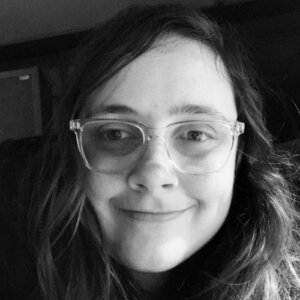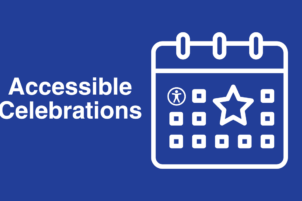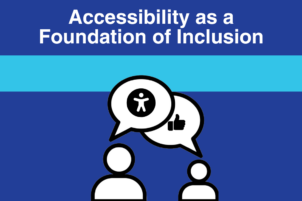
McKenzie Stribich
Over the last few years, I have done much-needed advocacy work for disabled people at my church, St. Luke’s Episcopal Church in Long Beach, a place whose people I love with all my heart. It is work I do out of love, both because I want my parish to be the welcoming place I know it to be myself, and because I understand the pain of exclusion. Throughout my advocacy work, I’ve told many personal stories to convey how dire it is that we make our faith spaces accessible. The following story is one I recently sent to my priests about how the lack of accessibility in the evangelical church in which I grew up negatively impacted me.
When I was a child and had surgery that landed me in a wheelchair during recovery, I couldn’t attend Sunday school with the children my age because the room for my grade was upstairs and the church had no elevator. And so, I attended Sunday school with the grade above me because their classroom was downstairs. For the next few years, I moved from grade to grade with the older kids.
Because of the inaccessibile building and decision to place me with older students, I never connected with most of the kids my age at church. I was attached to the kids older than I, and eventually they graduated and left me behind. I was never put into small groups with the older kids in high school youth group, even though I desperately wanted to be (once I was directly and explicitly told I wouldn’t fit in with the people older than I was because of the age difference). Eventually, I stopped attending that youth group because none of my friends attended anymore. I started attending the college group while still in high school, but there were always questions about whether that was age appropriate. High school was extremely lonely, and I never fit in at school or church. Looking back, that singular experience, forced upon me because of the lack of elevator accessibility, led to significant isolation that lasted into college.
I’m happy to say that my advocacy and stories have begun shifting attitudes and making change at St. Luke’s. Indeed, stories are a powerful tool in making change that abstract ideas cannot. There’s still much work to be done, in both the Christian church as a whole and in my present home parish, but I’ve seen improved inclusion at St. Luke’s with the installation of ramps and a wheelchair lift. I’ve also seen a growing awareness about issues faced everyday by my fellow disabled siblings. I’m surely grateful for the chance to be heard at the place I call home—and right here in the JDP.






